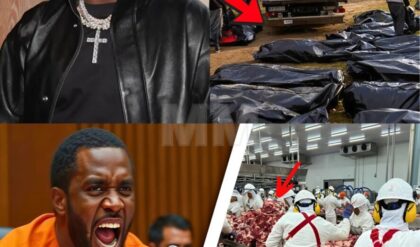Donovan Mitchell has recently signed a substantial extension with the Cleveland Cavaliers, cementing his presence in the team for the foreseeable future. This move has been anticipated throughout the year as a critical decision not only for the Cavaliers but also for the NBA landscape at large. Prior to this extension, Mitchell was set to become a free agent in 2025, a situation that could have forced Cleveland to consider trading him to avoid losing a valuable asset without return. Speculation had connected him to teams like the Miami Heat, New York Knicks, and Los Angeles Lakers, hinting at potential league-wide shifts had he been traded. However, with Mitchell choosing to stay, attention now shifts to how this impacts Cleveland’s future roster strategy.
Strategic Implications of Mitchell’s Contract
The new extension is a three-year deal, diverging from the longer commitments that players like Jayson Tatum have made in recent years. There are two primary reasons for this choice. First, the shorter duration allows Mitchell to maximize his earnings over the next several years. When this contract expires in 2027, Mitchell will have completed a decade in the league, making him eligible for a significantly larger contract, estimated at around $380 million over five years. Such a deal represents the most lucrative option available under current NBA rules, which undoubtedly influenced Mitchell’s decision.
The second reason is strategic leverage. By agreeing to a shorter extension, Mitchell ensures that the Cavaliers remain incentivized to continue building a competitive team. A longer contract would have reduced his leverage, potentially allowing the team to become complacent. With a three-year term, Mitchell retains the ability to apply pressure on the Cavaliers’ front office, signaling that if they fail to improve or sustain a high level of competitiveness, he could request a trade before his contract expires. This approach mirrors that of other NBA stars who prioritize flexibility and leverage over long-term security, ensuring they retain significant control over their career trajectories.
Cleveland’s Roster: Potential Changes on the Horizon
Mitchell’s decision to stay significantly impacts the Cavaliers’ roster, specifically regarding the futures of key players like Darius Garland, Evan Mobley, and Jarrett Allen. Rumors have previously suggested tension between Garland and Mitchell, with reports indicating that Garland might have requested a trade had the Cavaliers not extended Mitchell. However, it appears that any discontent has cooled, as the team prepares to move forward with both players.
The most intriguing aspect of Cleveland’s roster concerns their frontcourt composition, particularly the roles of Mobley and Allen. During the past postseason, Mobley shone when deployed at the center position, raising questions about Allen’s long-term fit with the team. Some within the NBA believe that Mobley’s potential is best realized as a center, suggesting that Cleveland may ultimately decide to trade Allen. While the Cavaliers’ management has publicly affirmed their commitment to keeping the core intact, the realities of NBA payroll structures, particularly the new second-apron tax, might eventually necessitate a different decision.
The Financial Realities of Building a Contender
Keeping a core group of highly paid players is a luxury few teams can afford, especially given the NBA’s new financial rules. Under the league’s collective bargaining agreement, teams face severe penalties for surpassing the second-apron threshold. This structure is designed to discourage super teams, making it challenging for organizations to carry multiple high-salary players. The Cleveland Cavaliers, like many teams, might find themselves forced to trim payroll in the coming years.
Cleveland’s situation becomes particularly complex when considering the financial commitments to players like Garland, Mitchell, and potentially Mobley. Allen’s current contract is relatively modest compared to the deals Mitchell and Garland command, but the cumulative effect of multiple large contracts can be challenging to manage. Looking at other teams across the league, the Nuggets recently let go of Kentavious Caldwell-Pope, and the Clippers parted ways with Paul George, both moves motivated by financial constraints. Cleveland’s core may similarly be forced into decisions shaped more by financial sustainability than by basketball strategy.
Long-Term Prospects and Potential Trade Scenarios
If the Cavaliers decide to retain their core, including Allen, it will be essential to surround them with role players capable of filling in the gaps, particularly on the wing. The addition of Max Strus could help address some of these needs, but questions remain about the team’s depth and flexibility. If Cleveland underperforms or faces injuries, they may need to reevaluate whether their current roster composition is conducive to contending for a title.
One of the most likely scenarios, should Cleveland need to make adjustments, would be exploring trades for Jarrett Allen. His skill set as a rim protector and rebounder is valuable, and his contract could be attractive to teams seeking to strengthen their frontcourt without committing to a superstar salary. While public statements from the Cavaliers’ front office have emphasized stability, trading Allen might become a practical necessity.
Alternatively, if Mitchell exercises his leverage and signals dissatisfaction with Cleveland’s competitiveness, the team could find themselves compelled to consider larger-scale changes, potentially even revisiting the possibility of moving Mitchell before his contract concludes. As was the case with other stars, the flexibility of shorter contracts ensures that these decisions remain relevant and dynamic, rather than fixed and inevitable.
Conclusion: The Path Forward for Cleveland
As the Cavaliers enter this new chapter with Donovan Mitchell, they face both exciting opportunities and considerable challenges. Mitchell’s extension signifies a commitment from both sides, yet the shorter duration maintains an air of uncertainty that could influence the team’s approach in the coming seasons. Cleveland’s ability to navigate this period effectively will depend on the front office’s capacity to balance financial realities with the goal of building a competitive, cohesive team.
The Cavaliers have already defied expectations by acquiring Mitchell, and his extension is a testament to the organization’s ambition. However, the road ahead is far from straightforward. With pressures from the league’s financial framework and the competitive demands of the NBA, Cleveland’s choices in the next few years will be crucial. Whether they opt to maintain their current core or reconfigure their roster, the Cavaliers have positioned themselves as one of the more intriguing teams to watch as they navigate this challenging landscape.





